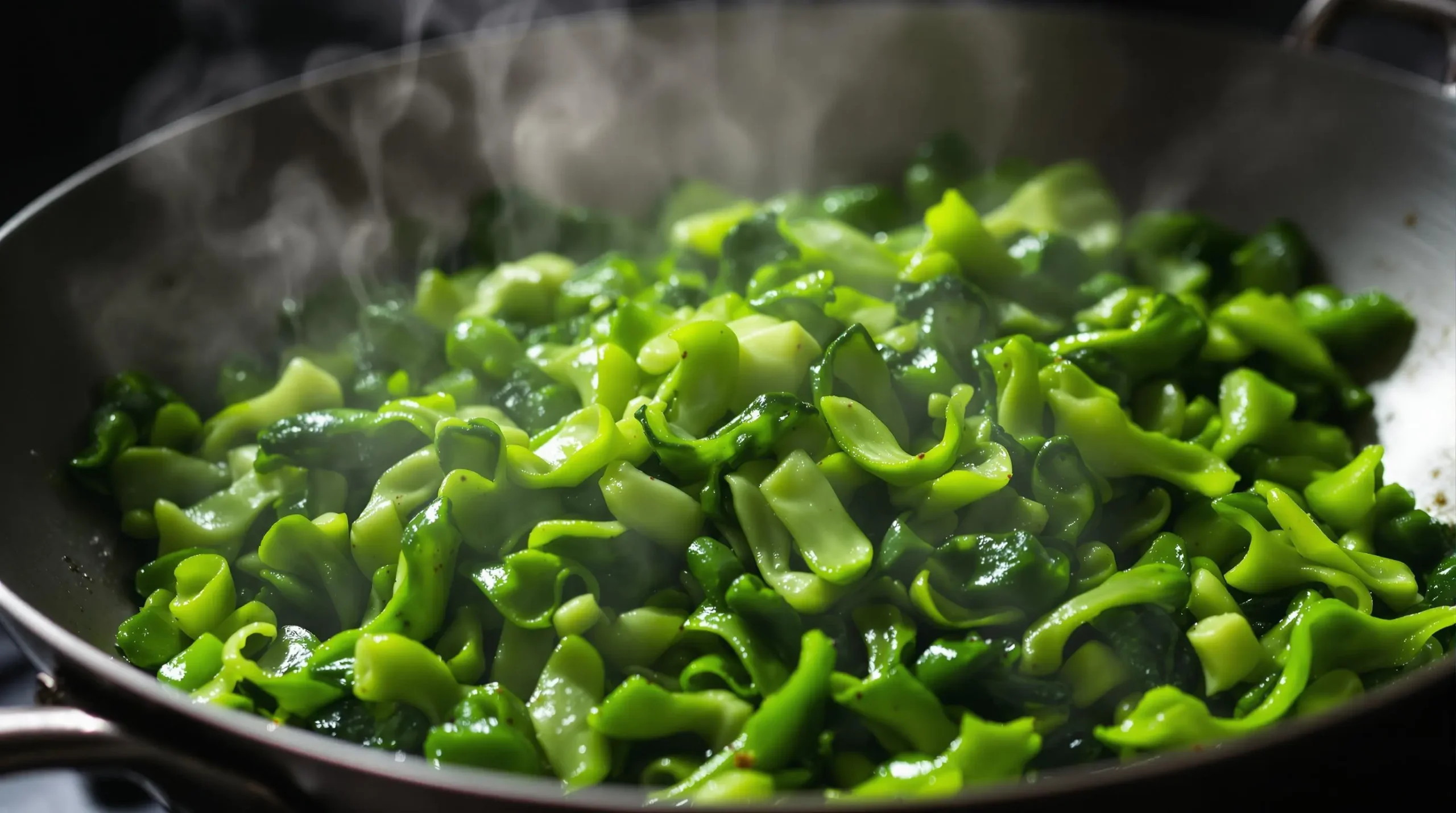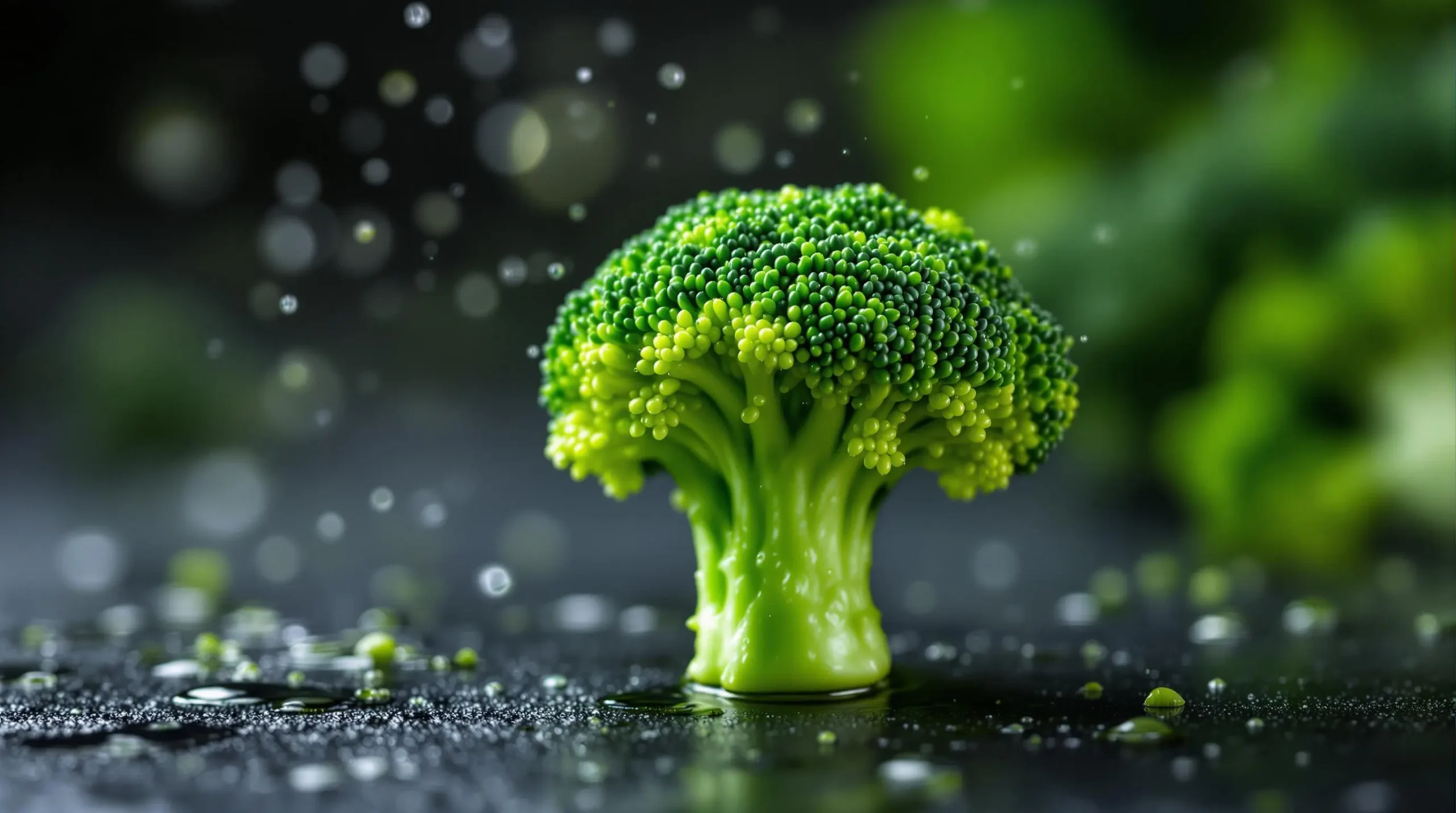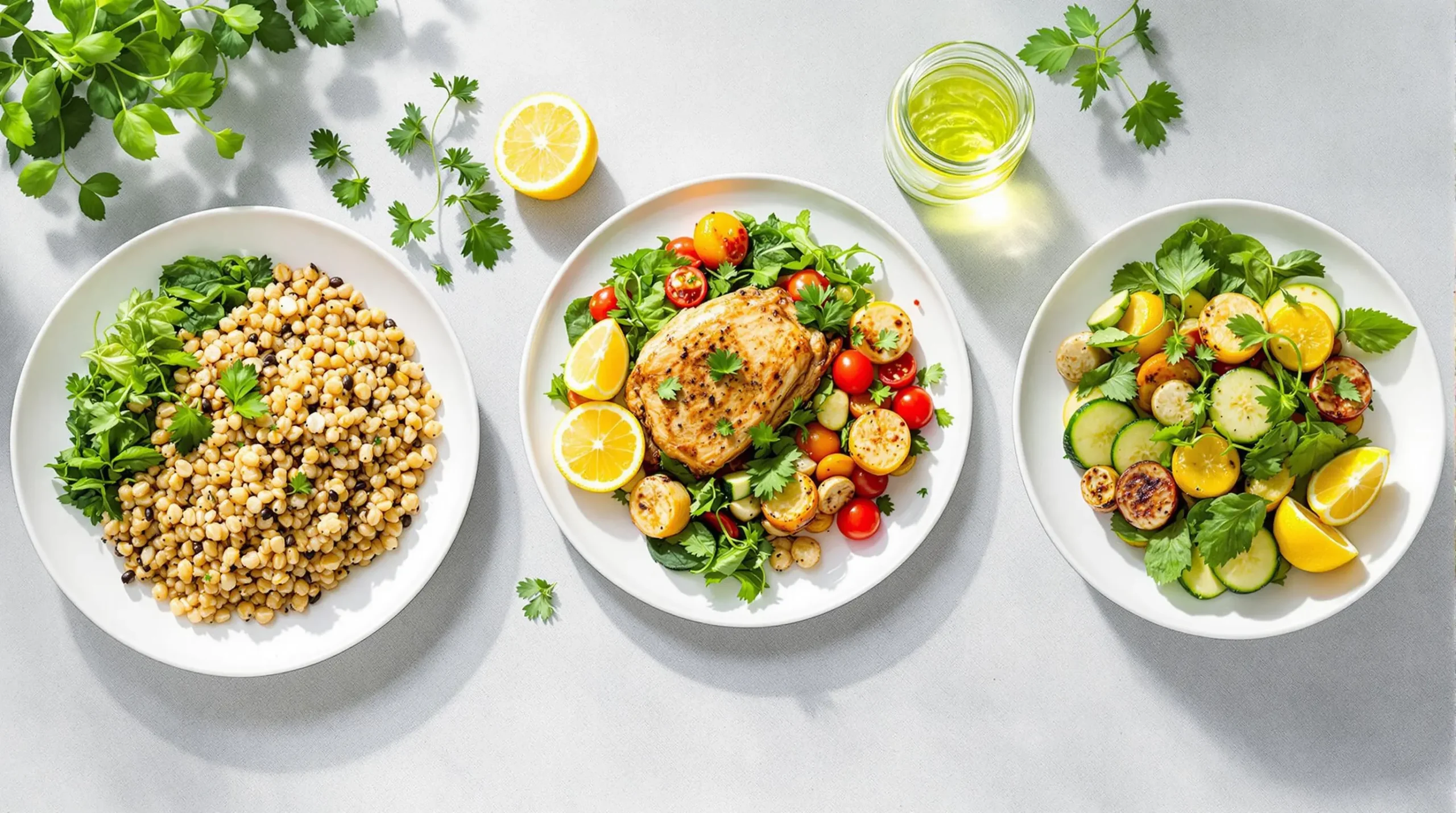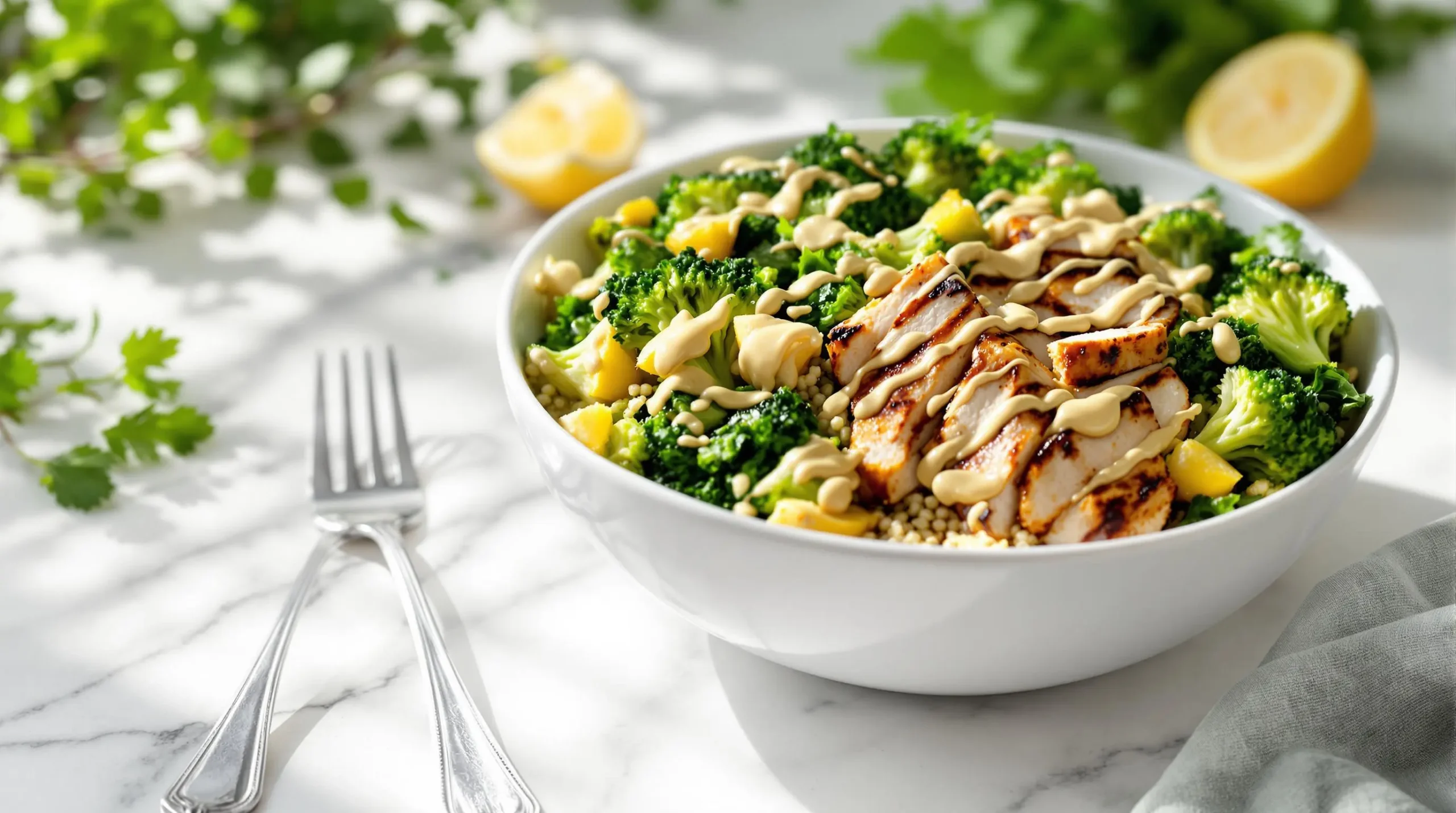Why Lean and Green Recipes Are Trending
Looking for fresh inspiration in the kitchen? Lean and green recipes have taken the culinary world by storm, offering exciting ways to transform everyday ingredients into memorable meals. From social media feeds to popular cooking shows, these vibrant dishes are capturing attention with their appealing colors and creative combinations.
Furthermore, these recipes align perfectly with modern cooking preferences. As more people seek out sustainable meal options, lean and green recipes provide an ideal solution by incorporating seasonal produce and plant-forward ingredients. Additionally, they offer practical versatility – you can easily adapt them for quick weeknight dinners or impressive weekend gatherings.
Getting Started with Lean and Green Cooking
In this comprehensive guide, you’ll discover how to master the art of creating delicious lean and green recipes right in your own kitchen. We’ll explore everything from basic cooking techniques like blanching and roasting to clever meal prep strategies that save time. You’ll also learn about smart ingredient swaps, seasoning secrets, and time-saving shortcuts that make these dishes both practical and enjoyable.
Whether you’re new to cooking or an experienced home chef, this collection offers something for everyone. We’ll walk through simple stir-fries, one-pan meals, and make-ahead options that fit busy schedules. Plus, you’ll find tips for shopping smarter and storing ingredients to maximize freshness and flavor.
Ready to transform your everyday meals into colorful, satisfying dishes? Let’s dive into our carefully curated selection of recipes that prove eating well can be both simple and delicious.
Understanding Lean and Green Cooking Fundamentals
The foundation of creating delicious lean and green recipes starts with understanding some basic principles. Let’s explore the essential elements that make these dishes both satisfying and enjoyable.
What Makes a Recipe ‘Lean and Green’
When crafting lean and green recipes, balance is key. The ideal plate typically features a generous portion of colorful vegetables alongside a moderate serving of protein. For instance, a classic stir-fry might combine crisp snap peas and broccoli with strips of tender chicken or tofu.
Most successful dishes follow these basic proportions:
- 2-3 cups of vegetables per serving
- 4-6 ounces of lean protein
- 1-2 tablespoons of cooking fats
- Seasonings to taste
Essential Ingredients for Your Kitchen
To get started with lean and green cooking, stock your kitchen with these versatile ingredients:
Fresh Vegetables:
- Leafy greens (spinach, kale, Swiss chard)
- Cruciferous vegetables (broccoli, cauliflower, Brussels sprouts)
- Quick-cooking vegetables (zucchini, bell peppers, asparagus)
Protein Options:
- Chicken breast
- Fish fillets
- Tofu and tempeh
- Eggs
Pantry Staples:
- Extra virgin olive oil
- Fresh garlic and ginger
- Herbs and spices
- Citrus fruits for finishing

Basic Cooking Techniques
Mastering a few simple cooking methods will help you create delicious lean and green recipes consistently:
Steaming and Blanching:
Start by bringing water to a boil in a pot fitted with a steamer basket. For tender-crisp vegetables, steam broccoli for 3-4 minutes or asparagus for 2-3 minutes. When blanching, prepare an ice bath beforehand to stop the cooking process and preserve the vibrant green color.
Stir-Frying Tips:
- Preheat your pan or wok until very hot
- Cut ingredients into uniform sizes for even cooking
- Cook proteins first, then set aside
- Add vegetables in order of cooking time
- Keep ingredients moving for even heating
Seasoning Approaches:
Layer flavors throughout the cooking process rather than seasoning only at the end. Start with aromatic ingredients like garlic and ginger, add your main ingredients, and finish with fresh herbs or a squeeze of lemon juice.
For example, try this simple technique with Asian-inspired flavors: Start by sautéing minced garlic and ginger in oil, add your chosen protein until nearly cooked, then toss in snap peas and bell peppers. Finish with a splash of rice vinegar and fresh cilantro.
Remember, these fundamentals serve as a starting point. As you become more comfortable with the basics, you can experiment with different ingredient combinations and cooking methods to create your own signature dishes.
Quick and Easy Lean and Green Recipes
Ready to put your cooking skills into action? These lean and green recipes are perfect for busy weekdays while still delivering amazing flavor. Whether you’re cooking for one or feeding a family, these options bring variety and satisfaction to your table.
15-Minute Protein-Packed Bowls
Transform simple ingredients into exciting meals with these quick-assembly bowls. For instance, our salmon and broccoli bowl combines perfectly seared fish with crisp vegetables for a satisfying meal. Similarly, the chicken and kale power bowl offers a delicious mix of textures and flavors that come together in minutes.
Try this simple protein bowl formula:
- Choose your base (quinoa, brown rice, or cauliflower rice)
- Add 4-6 ounces of protein
- Include 2-3 types of vegetables
- Top with your favorite seasonings
The tempeh and bok choy stir-fry represents another quick option, featuring crispy tempeh pieces and tender-crisp vegetables in a savory sauce. Moreover, these bowls work great for meal prep – simply prepare components ahead and assemble when ready to eat.
One-Pan Green Meals
Furthermore, these lean and green recipes minimize cleanup while maximizing flavor. The sheet pan chicken and vegetables combination has become a weeknight favorite, offering endless possibilities for customization. Additionally, the skillet frittata with spinach transforms basic ingredients into an impressive meal suitable for any time of day.
Essential one-pan tips:
- Preheat your pan thoroughly
- Cut ingredients in similar sizes
- Arrange items according to cooking time
- Season generously throughout cooking
The baked fish with asparagus demonstrates how simple ingredients shine with proper preparation. Just layer your ingredients, add seasonings, and let the oven do the work while you tackle other tasks.
No-Cook Green Options
Sometimes the best lean and green recipes require no cooking at all. Mason jar salads have revolutionized lunch prep, staying fresh for days when properly layered. Start with dressing at the bottom, add firm vegetables next, and finish with delicate greens on top.
Quick no-cook ideas include:
- Colorful mason jar salads with rainbow vegetables
- Fresh collard wraps filled with crisp vegetables
- Refreshing green smoothie bowls topped with seeds and fruit
These options work particularly well during warm weather or when you’re short on time. For example, collard wraps offer a fresh alternative to sandwiches – simply fill large leaves with your favorite ingredients and roll them up like a burrito.
Each of these recipes demonstrates how simple ingredients can create satisfying meals without complicated techniques or lengthy preparation times. Remember to keep your favorite combinations in regular rotation while experimenting with new variations to keep meals interesting and enjoyable.
Meal Prep and Storage Strategies for Lean and Green Success
Making lean and green recipes part of your regular routine becomes easier with smart meal prep and storage strategies. Let’s explore practical ways to keep your ingredients fresh and your meals ready to enjoy throughout the week.
Weekly Prep Guidelines
Starting your week with a solid plan makes cooking lean and green recipes more manageable. First, create a detailed shopping list organized by store department. Additionally, schedule your prep time when you’ll have minimal interruptions, typically Sunday afternoon or evening.
Essential prep activities include:
- Washing and chopping hardy vegetables
- Cooking protein portions in batches
- Preparing versatile sauces and dressings
- Portioning ingredients for quick assembly
For example, roast a large batch of vegetables like broccoli, Brussels sprouts, and bell peppers on sheet pans. Meanwhile, grill several chicken breasts or bake fish fillets. These components can be mixed and matched throughout the week.
Storage containers matter significantly. Invest in:
- Glass containers with secure lids
- Mason jars for salads and dressings
- Divided containers for portion control
- Silicone bags for produce storage
Storage Tips for Green Vegetables
Proper storage helps maintain freshness and prevents waste. Furthermore, understanding how to store different vegetables extends their shelf life considerably.
Basic storage guidelines:
- Leafy greens: Wash, dry thoroughly, and store with paper towels
- Broccoli and cauliflower: Keep unwashed in loose plastic bags
- Herbs: Trim stems and store upright in water, like flowers
- Asparagus: Stand in a container with water, cover loosely
Temperature recommendations:
- Most greens: 35-40°F (crisper drawer)
- Herbs: 40°F (middle shelf)
- Root vegetables: 50-55°F (separate drawer)

Reheating and Serving
The success of lean and green recipes often depends on proper reheating techniques. Moreover, maintaining texture and appearance makes meals more appealing.
Best reheating practices:
- Use medium heat rather than high
- Add a splash of water when reheating vegetables
- Stir or toss frequently during reheating
- Heat proteins separately from vegetables
To avoid soggy vegetables:
- Slightly undercook during prep
- Cool completely before storing
- Use paper towels to absorb excess moisture
- Reheat quickly at proper temperature
Presentation enhances enjoyment. Try these serving tips:
- Layer components for visual appeal
- Add fresh herbs just before serving
- Include a variety of colors
- Drizzle with fresh dressing or sauce
By following these storage and prep guidelines, you’ll maintain the quality of your ingredients while saving time and reducing waste. Additionally, proper reheating techniques ensure your meals taste fresh and delicious throughout the week. Remember, successful meal prep is about finding a system that works for your schedule and preferences.
Frequently Asked Questions About Lean and Green Recipes
Looking to perfect your lean and green recipes? Here are answers to common questions that will help you create delicious meals consistently.
Q1: How can I make sure my green vegetables stay crisp?
To maintain vegetable crispness, follow these simple steps:
- Store vegetables unwashed until ready to use
- Pat dry thoroughly after washing
- Keep in perforated plastic bags in the crisper drawer
- Add a paper towel to absorb excess moisture
- Check temperature settings – aim for 35-40°F
Additionally, when cooking, avoid overcrowding the pan and use high heat for quick cooking methods like stir-frying. This helps vegetables maintain their crunch and vibrant color.
Q2: What are the best protein options for lean and green meals?
Several protein choices work wonderfully in lean and green recipes:
- Chicken breast (4-6 oz per serving)
- Fish fillets like cod or halibut
- Tofu or tempeh (6-8 oz portions)
- Eggs (2-3 per serving)
Moreover, you can mix different proteins throughout the week for variety. For instance, try fish on Monday, chicken on Wednesday, and plant-based options on Friday.
Q3: How can I make these recipes more filling?
To create satisfying meals, consider adding:
- Quinoa or brown rice (½ cup cooked)
- Sweet potatoes or squash
- Avocado slices
- Raw nuts or seeds as garnish
Furthermore, ensure proper portion sizes and include a variety of textures in each meal for better satisfaction.
Q4: Can these recipes be frozen?
Most components of lean and green meals can be frozen successfully:
- Cooked proteins freeze well for up to 3 months
- Many vegetables maintain quality when blanched first
- Store in airtight containers or freezer bags
- Label with dates and contents
However, some items like leafy greens and cucumber are best enjoyed fresh rather than frozen.
Remember, successful meal preparation often comes down to planning and practice. Start with simple recipes and gradually expand your repertoire as you become more comfortable with different ingredients and techniques.
Making the Most of Your Lean and Green Journey
As we wrap up our exploration of lean and green recipes, let’s recap the essential elements that make these dishes both enjoyable and practical for everyday cooking. Throughout this guide, we’ve discovered how simple ingredients and basic techniques can transform into delicious meals that bring variety to your table.
The success of lean and green recipes relies on a few key principles we’ve covered:
- Fresh ingredient selection and proper storage
- Basic cooking techniques like steaming and stir-frying
- Smart meal prep strategies
- Proper portioning and food combinations
- Time-saving shortcuts for busy schedules
Furthermore, remember that cooking is a journey of discovery. Start with the basic recipes we’ve shared, then gradually experiment with different vegetables, proteins, and seasonings. For instance, try swapping broccoli for asparagus in your favorite stir-fry, or test different herb combinations in your go-to protein bowl.
Additionally, consider these final tips for success:
- Begin with one or two new recipes each week
- Keep your favorite staple ingredients well-stocked
- Practice basic cooking techniques until they become second nature
- Document successful combinations for future reference
- Share your creations with family and friends
Ready to start your cooking adventure? Here’s a simple action plan:
- Choose one recipe from this guide
- Make your shopping list
- Set aside prep time
- Cook and enjoy
- Note what worked well and what you might adjust next time

Remember, creating delicious meals is about finding what works best for you and your schedule. Whether you’re cooking for one or feeding a family, these techniques and recipes provide a foundation for countless satisfying meals. Happy cooking!

